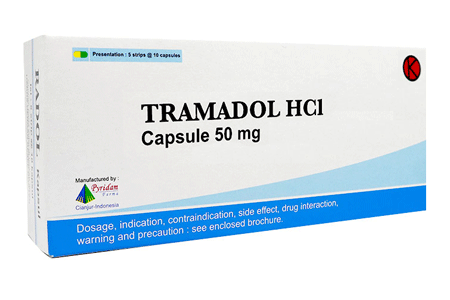Buy Tramadol (Ultram) Online Without Prescription

| Product Name: | Tramadol (Ultram) |
|---|---|
| Doses: | 50mg, 100mg |
| Prices: | $ 2.60 – Per Pill |
| Where To Buy Online | OnlinePharmacy |
|
Pain management is an important aspect of medical care to enhance the quality of life for individuals with chronic or acute pain. One of the commonly prescribed pain relievers is Tramadol, an opioid medication used to relieve moderate to severe pain. Tramadol has been widely adopted for its effectiveness in managing different types of pain, including postoperative pain, cancer pain, and chronic pain. Pain is a common experience that everyone goes through at some point in their life. It could be as minor as a headache or as severe as chronic pain from cancer. Whatever the cause of pain, it can affect every aspect of our daily lives and hinder us from achieving our goals. This is where pain management drugs like Tramadol come in. Tramadol - What is it? Tramadol is an opioid medication that works by binding to receptors in the brain to reduce pain perception. It is a potent analgesic that provides pain relief by altering the way the brain and nervous system respond to pain. Tramadol is available in two forms: immediate-release and extended-release. Immediate-release Tramadol is taken every 4 to 6 hours, while extended-release is taken once every 24 hours. Tramadol is unique in that it provides pain relief without causing drowsiness or sedation. This is particularly beneficial for people who need to remain alert and focused during the day, such as those who operate heavy machinery or drive for a living. Unlike other opioids, tramadol does not cause respiratory depression, making it safer for people with respiratory issues. In what forms tramadol is available Tramadol comes as a tablet, a solution (liquid), an extended-release (long-acting) tablet, and an extended-release (long-acting) capsule to take by mouth. The immediate-release form is usually prescribed for acute pain, and the extended-release form is prescribed for chronic pain.
Immediate-release Tramadol is a short-acting pain reliever that starts to work within an hour of ingestion. It is used to relieve moderate to severe pain and is available in tablets, capsules, and oral drops. The tablets and capsules usually come in strengths of 50 mg, 100 mg, or 200 mg. The immediate-release form of Tramadol lasts for about 4 to 6 hours, and therefore, multiple doses may be required in a day.
Extended-release Tramadol is a long-acting pain reliever that provides pain relief for up to 24 hours. It is used to manage moderate to severe chronic pain and comes in tablet form. The dosage strength for extended-release Tramadol is usually 100 mg, 200 mg, or 300 mg. It is important to note that the tablet should not be crushed or broken, as it may cause an overdose.
Liquid tramadol is a solution of tramadol hydrochloride in a liquid form. Liquid tramadol is available in different strengths and forms, and it can be prescribed for adults and children over the age of 12. The liquid form is particularly useful for those who have difficulty swallowing pills or tablets, as it can be easily mixed with other liquids or swallowed directly. How to Use Tramadol? Tramadol should be taken as prescribed by a healthcare professional. The dose of Tramadol may vary depending on the individual's pain intensity, tolerance, and medical condition. Tramadol is usually taken orally with a full glass of water with or without food. Crushing or breaking the tablet may affect its efficacy, and therefore, it is advisable to take the tablet whole. To use liquid tramadol, it is important to carefully measure the prescribed dose using a syringe or special measuring spoon. The medication should be taken at regular intervals, as directed by the healthcare provider. Tramadol should not be taken in larger amounts than prescribed, nor should it be taken more often than prescribed. How Does Tramadol Work and How Long Does It Work? Tramadol is a synthetic opioid that works by binding to the mu-opioid receptors in the brain and spinal cord. This action helps to increase the release of neurotransmitters like serotonin and norepinephrine, which are responsible for modulating pain sensations. In addition, tramadol has a longer half-life than other opioids, which means that the effects last longer. This reduces the need for frequent dosing and minimizes the risk of overdose. The immediate-release form of Tramadol starts to work within 30 minutes to an hour after ingestion and can last for up to six hours. The extended-release form of Tramadol, on the other hand, has a slower onset of action and can last for up to 24 hours. Tramadol works by binding to opioid receptors in the brain and nervous system to block pain signals. It also inhibits the reuptake of neurotransmitters, including serotonin and norepinephrine, to increase the pain threshold. Tramadol takes about an hour to start working and lasts for about 4 to 6 hours for immediate-release form while extended-release form last for about 24 hours. The duration of pain relief may vary from one individual to another, depending on factors such as the severity of pain and medical condition. Who can and cannot take tramadol? Tramadol is generally safe for most people, but there are certain groups who should not take it. People who are allergic or hypersensitive to tramadol or any of its ingredients should not take this medication. Additionally, people who are taking other opioids, tranquilizers, sedatives, or alcohol should not take tramadol. Pregnant women and breastfeeding mothers should also avoid tramadol as it can pass through breast milk and harm the baby. It is important to note that people with certain medical conditions should consult their doctor before taking tramadol. People with liver or kidney disease, seizures, or a history of addiction to drugs or alcohol need to be cautious when taking tramadol. Also, elderly individuals, those with respiratory problems, and individuals with a history of stomach problems should be monitored closely while taking this medication. Individuals with a history of drug abuse, addiction, or a seizure disorder should not take Tramadol. Pregnant and breastfeeding women should also avoid Tramadol, as it may harm the fetus or infant. It is advisable to inform your healthcare provider of any medical conditions or allergies before taking Tramadol. Does Tramadol Improves mood and quality of life? Chronic pain can have a significant impact on a person's mental health, leading to depression and anxiety. Tramadol can help to improve mood and quality of life by reducing pain and increasing the levels of certain neurotransmitters in the brain. Tramadol has been found to have a low risk of dependence, making it a safer option for long-term pain management than other opioids. Tramadol has been found to increase levels of serotonin and norepinephrine in the brain. These neurotransmitters play a role in regulating mood, appetite, and sleep. By increasing the levels of these neurotransmitters, tramadol can help to improve mood and reduce symptoms of depression and anxiety. Tramadol has been found to improve quality of life in people with chronic pain. A study published in the Journal of Pain Research found that tramadol improved physical functioning, emotional functioning, and overall quality of life in people with chronic lower back pain. |

